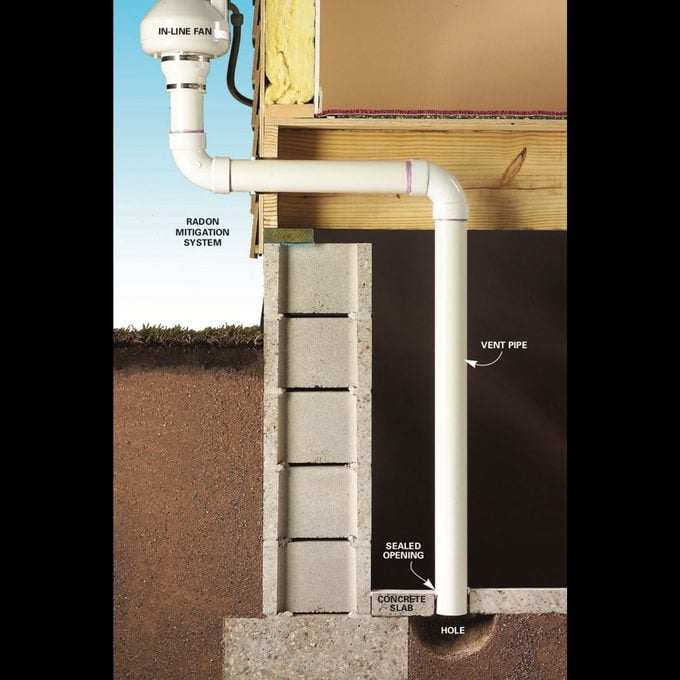Radon Gas Remediation: The Best Radon Mitigation Systems
Updated: Sep. 29, 2022
Radon gas moves from the soil into a home directly through pores in concrete and gaps in walls and floors. Any house, of any age, in any location can have elevated radon levels.

What is radon gas?
Radon gas is a colorless, odorless radioactive gas that’s produced by decaying uranium. Radon gas is present in nearly all soils, and very low levels of radon gas are found in the air we breathe every day. Problems occur when radon gas enters your home and gets trapped.
How does radon gas get in?
Radon gas moves from the soil into a home directly through pores in concrete and gaps in walls and floors. Any house, of any age, in any location can have elevated radon levels. What matters is how your specific house interacts with the surrounding soil. Your neighbor’s radon level may be very different from yours.
Is radon gas dangerous?
Yes. Long-term exposure to high levels of radon can cause lung cancer. Learn more about radon gas and why it is so dangerous.
The two best radon gas mitigation methods
The best way to deal with radon gas is to suction it out of the lowest level and dump it outside or pressurize your lowest level so it never enters your home in the first place.
1. Remove radon gas using suction
Suction systems work by creating negative air pressure in an existing sump pump pit, a freshly dug gravel pit under your concrete floor, or by placing a plastic sheet over the soil in your crawl space and sucking air from under the plastic. The suction pipe can exit your house though your roof, rim-joist, side wall or gable. If the soil under your home isn’t permeable, you may have to install a block-wall suction system that removes radon gas from all the hollow spaces in the blocks.
2. Keep radon gas out with pressure
The pressurization method works by blowing air continuously into the lowest level of your home to prevent radon from seeping in.
Radon mitigation system effectiveness
Active suction systems reduce radon gas concentrations by 50% to 99%, while passive suction systems reduce concentrations by only 30% to 70%. However, if your radon gas concentrations are at the low end of the scale, a passive system may work just fine. You can always add a fan later on if radon levels increase.
Pressurization is also highly effective, reducing radon concentrations by 50% to 99%. Pressurization does have some downsides though; the doors to the lower level and lower level windows must be kept closed and sealed at all times. That’s not always practical if you want to use your lower level as living space.
Radon mitigation system installation costs
Radon mitigation system installation costs vary depending on local labor rates and whether the space in your home is finished or unfinished.
- Suction systems usually cost around $1,000 to $3,500
- Block-wall suction systems can cost up to $5,000 or more due to the time required to drill every block around the perimeter and then pipe the airflow to the vent.
- Pressurized systems cost around $1,000 to $2,500
Learn how to install your own radon mitigation system and save $1,000.
How much does it cost to run a radon mitigation system
Active suction and pressurization systems consume electricity 24/7 and can sometimes cause heat loss, depending on the design and local weather conditions. Annual electric cost and maintenance usually runs between $200 and $500.
Buy a basic radon test kit from Amazon.
Every product is independently selected by our editors. If you buy something through our links, we may earn an affiliate commission.